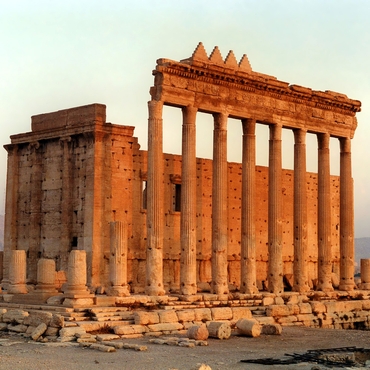
- Home
- Explore the site
- The origins of Palmyra
- Ancient sources
Palmyra in Middle Eastern sources from the 3rd to 1st millennia
The name Tadmor appears as early as the 19th century BCE on a tablet found in the Assyrian trading post of Kanesh in central Anatolia. It is then mentioned on rare occasions at Mari in the 18th century, at Emar on the great bend of the Euphrates in the 14th century, and in royal Assyrian inscriptions in the 11th century without shedding much light on the city’s history.
Regarded as a den of bandits by the Assyrians, the city itself appears to have been preyed on by desert nomads. Archaeological evidence of these early periods remains slight, although a smattering of remains suggest the settlement may have originally been located to the east of the present site, on the artificial mound occupied by the Temple of Bel.
Palmyra does not reappear in the historical record until 41 BCE when Mark Antony unleashed Roman troops against the city, supposedly in punishment for its favourable attitude towards the Parthians. In reality, it was an ill-starred looting expedition for his soldiers. Recent excavations by a team of Syrian and German archaeologists, however, brought to light a vast district to the southwest of the Roman quarter, south of the wadi, with buildings dating back to the 3rd century BCE, rebuilt and enhanced up to the reign of Augustus, at the end of the 1st century BCE and the beginning 1stcentury CE. This was the heart of the city, towards which faced the main existing temples, including the great Temple of Bel to the east and the Temple of Nabu to the north of the wadi.

